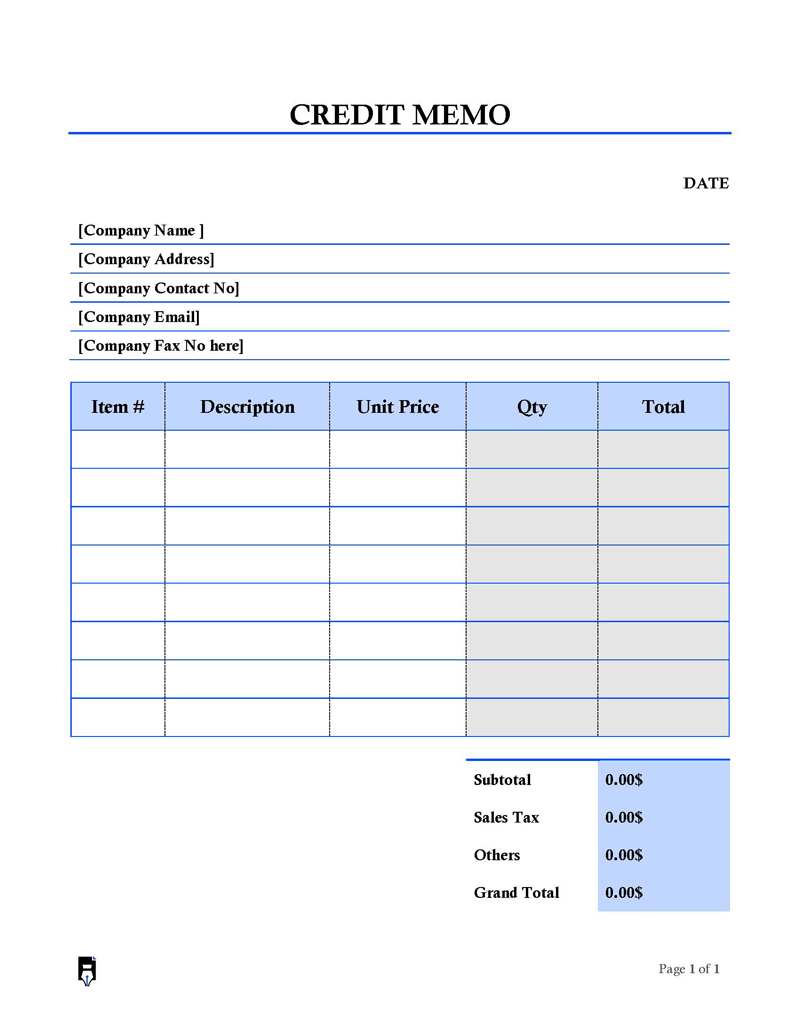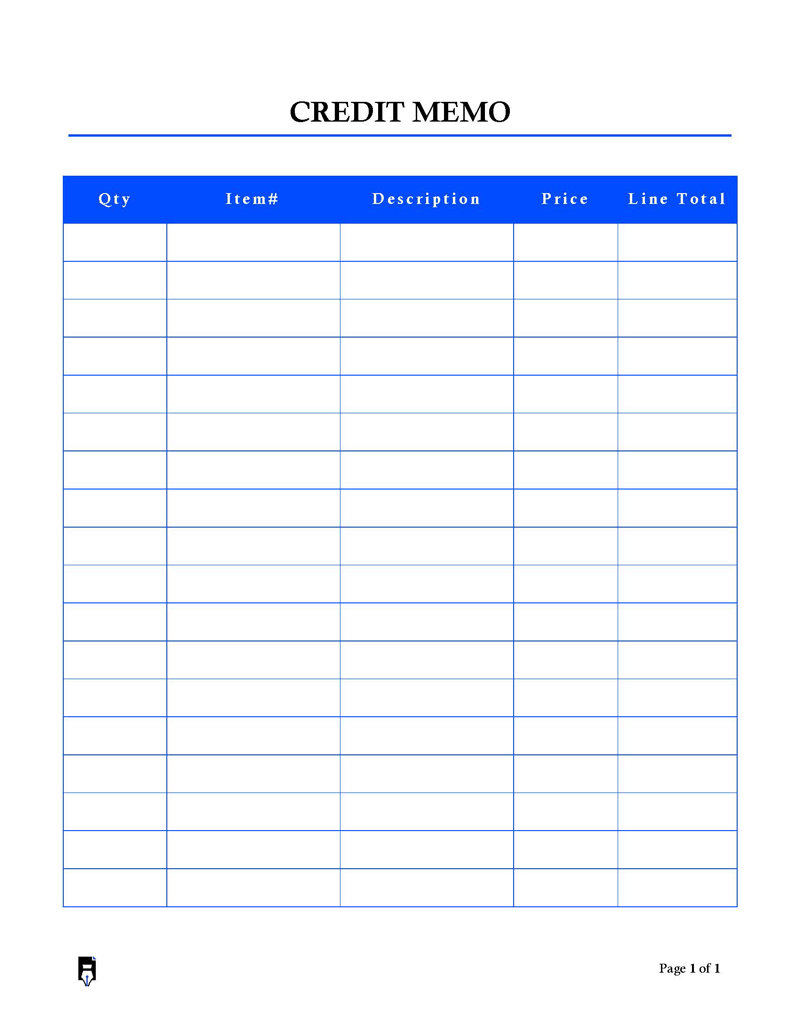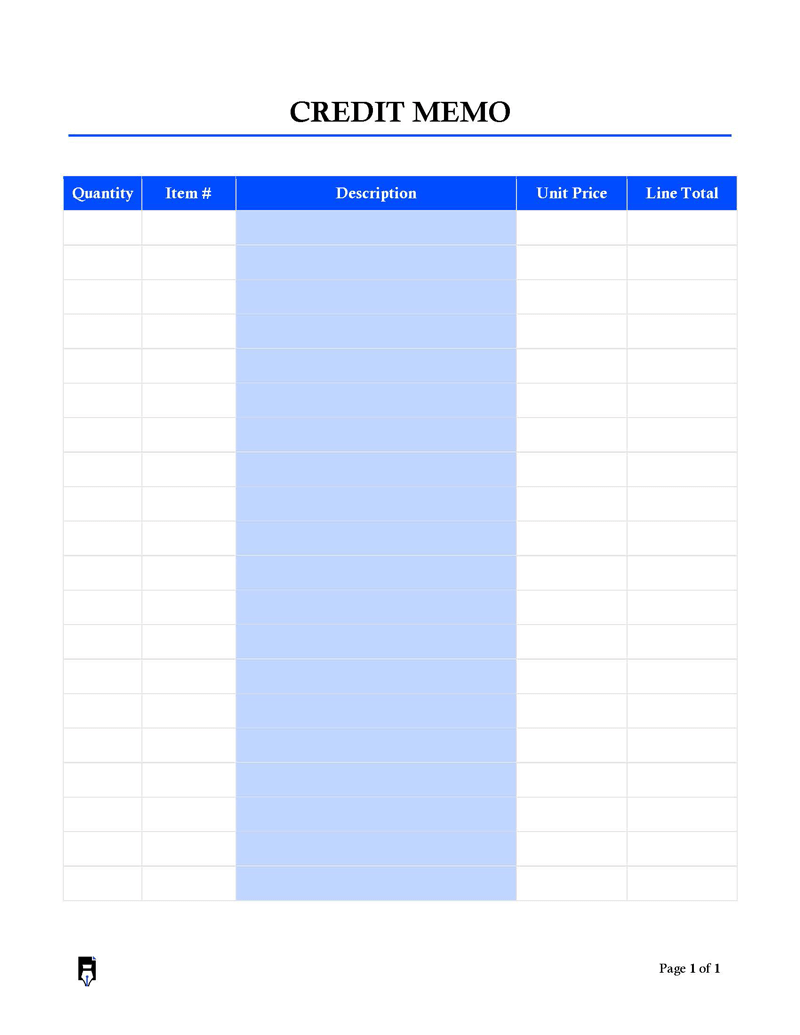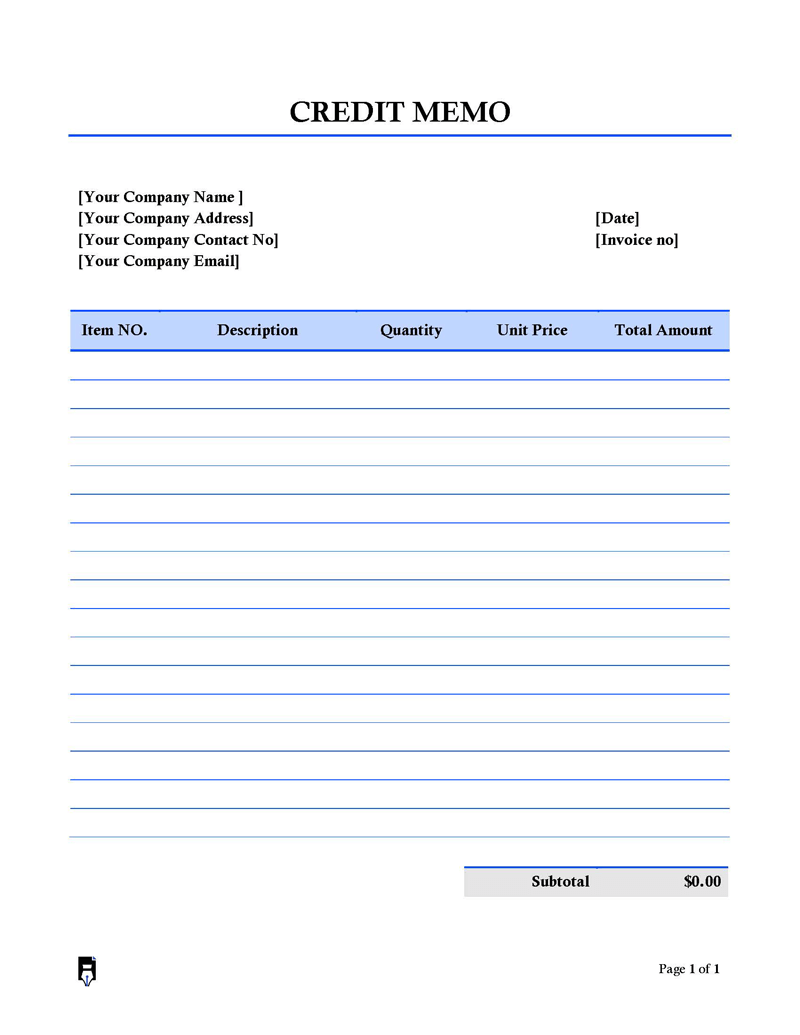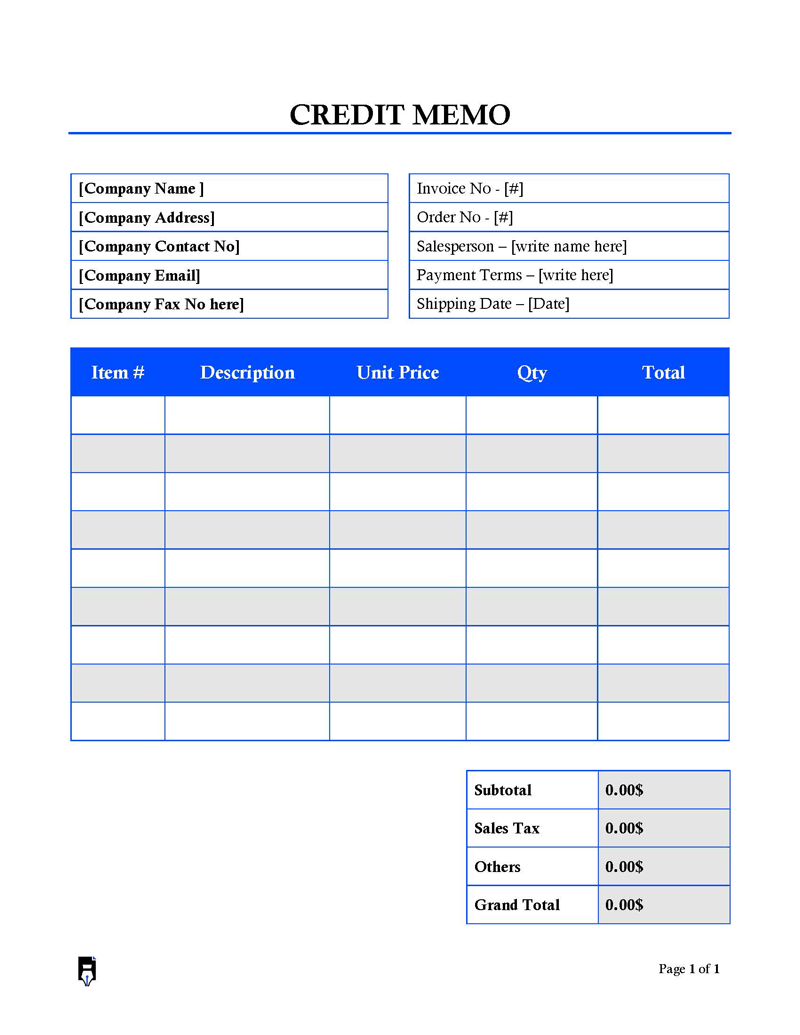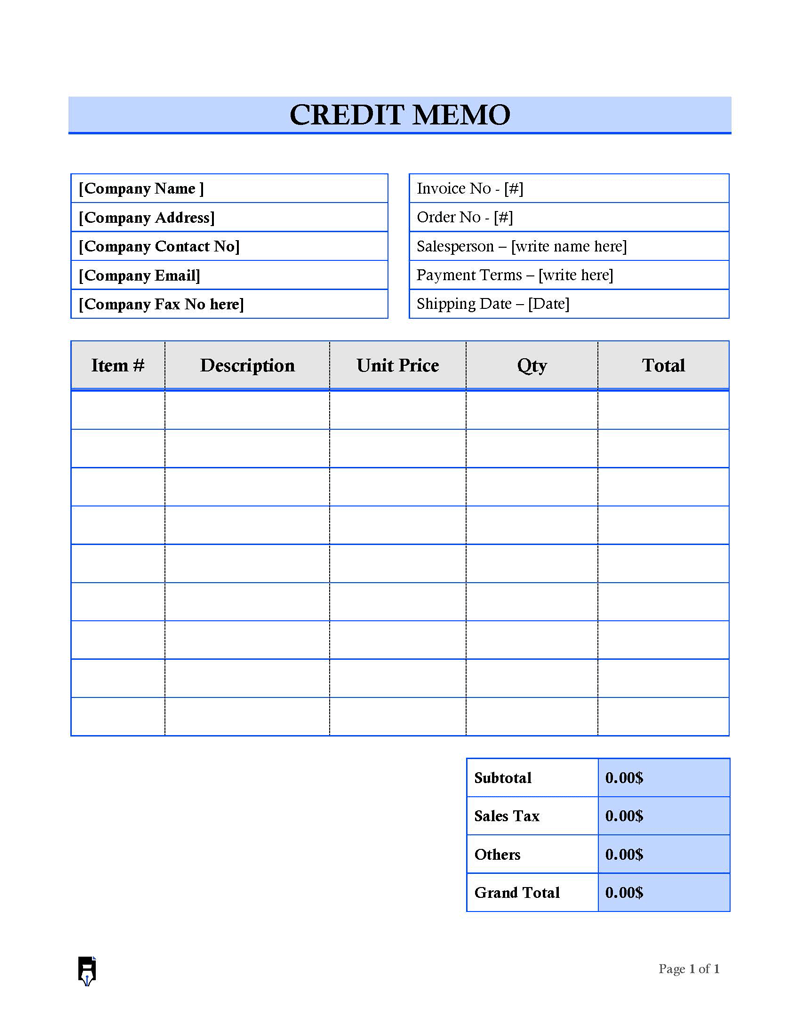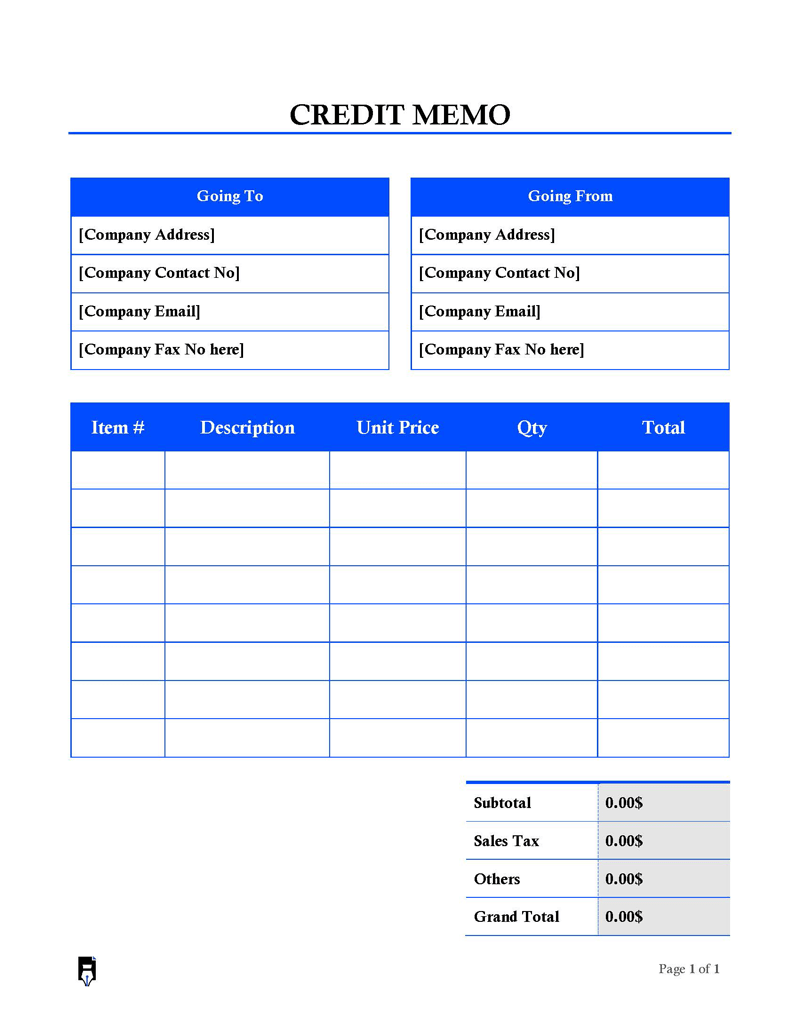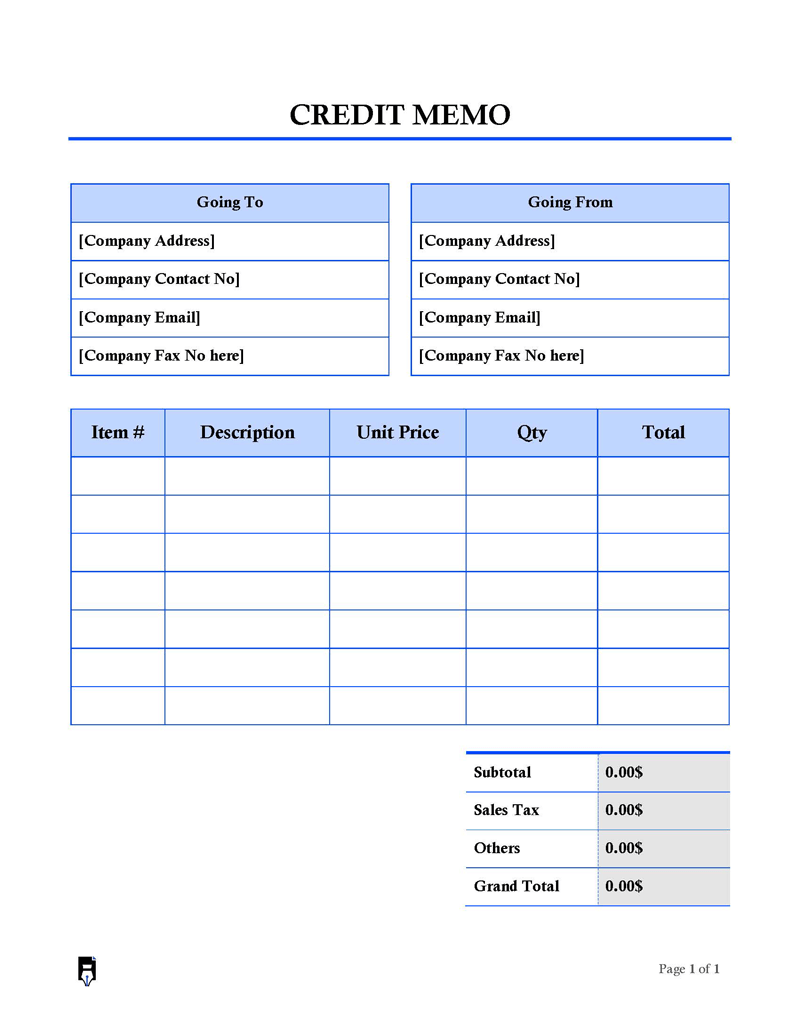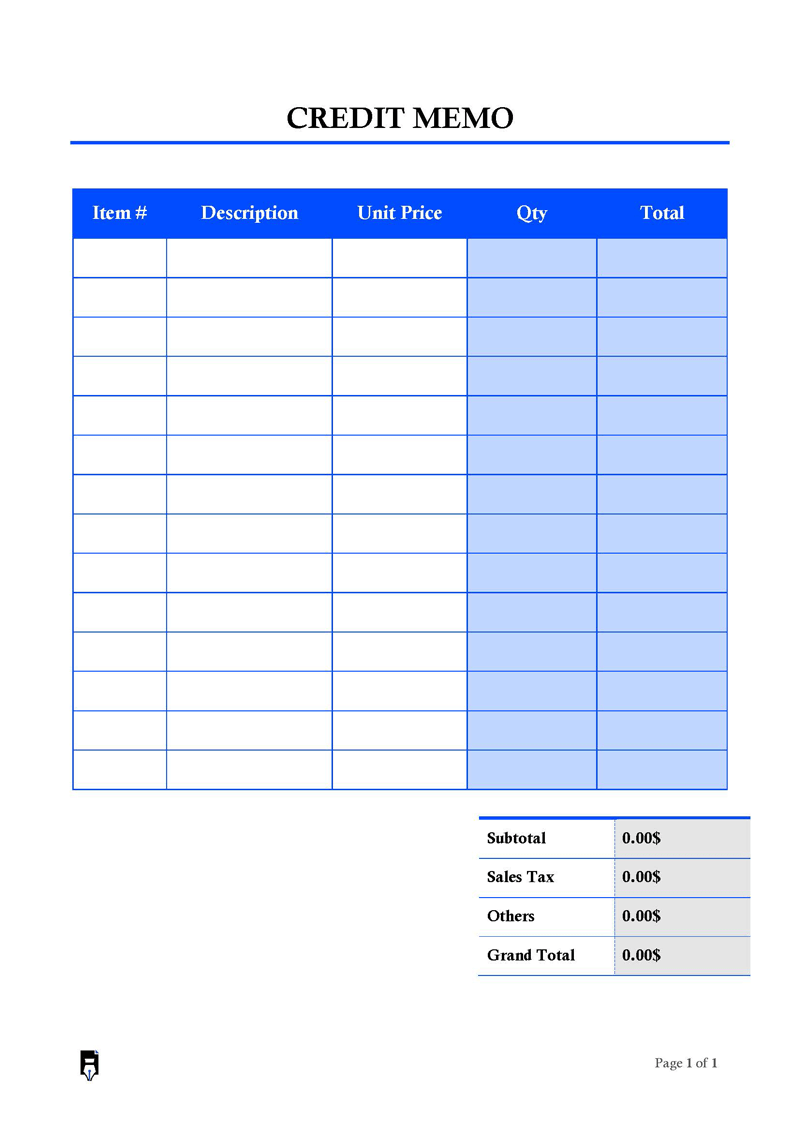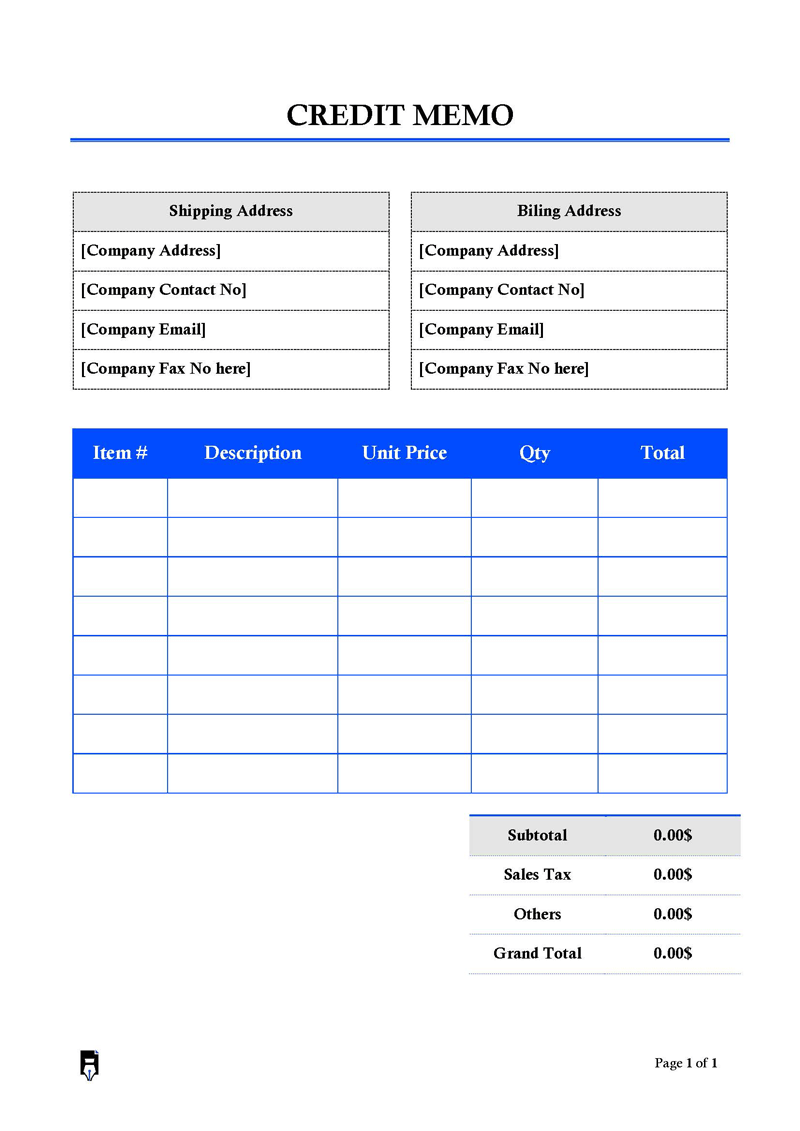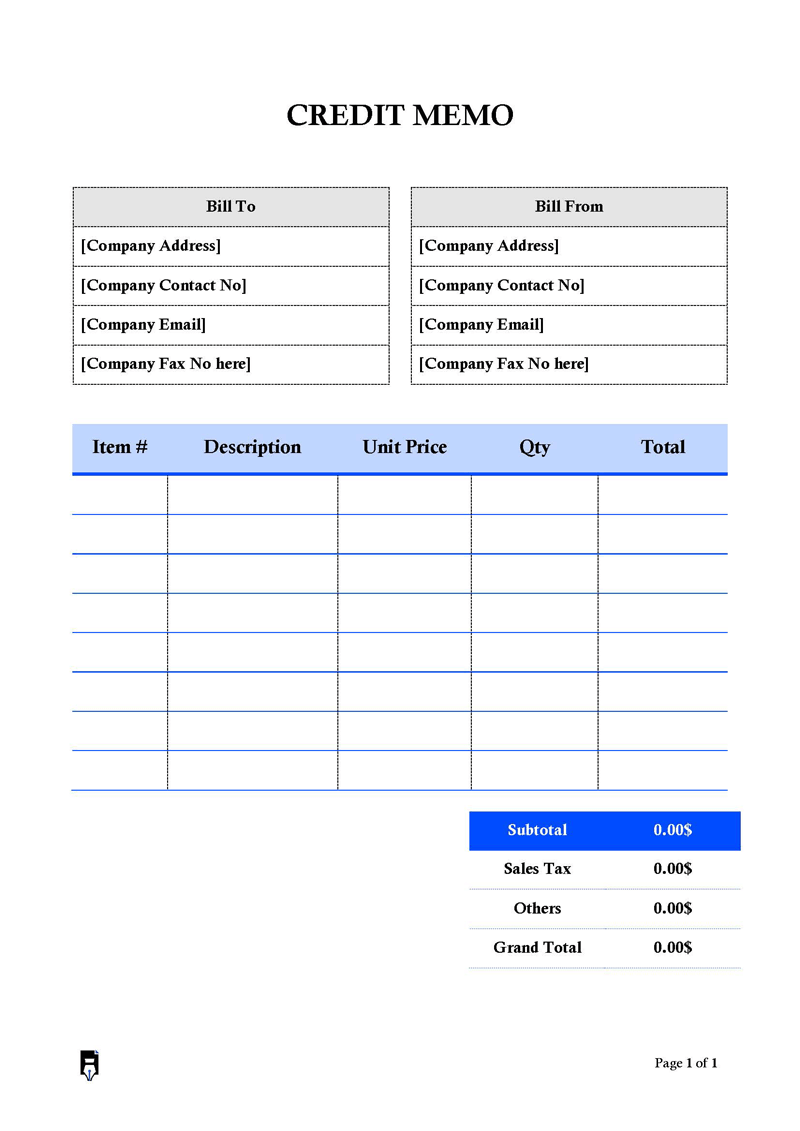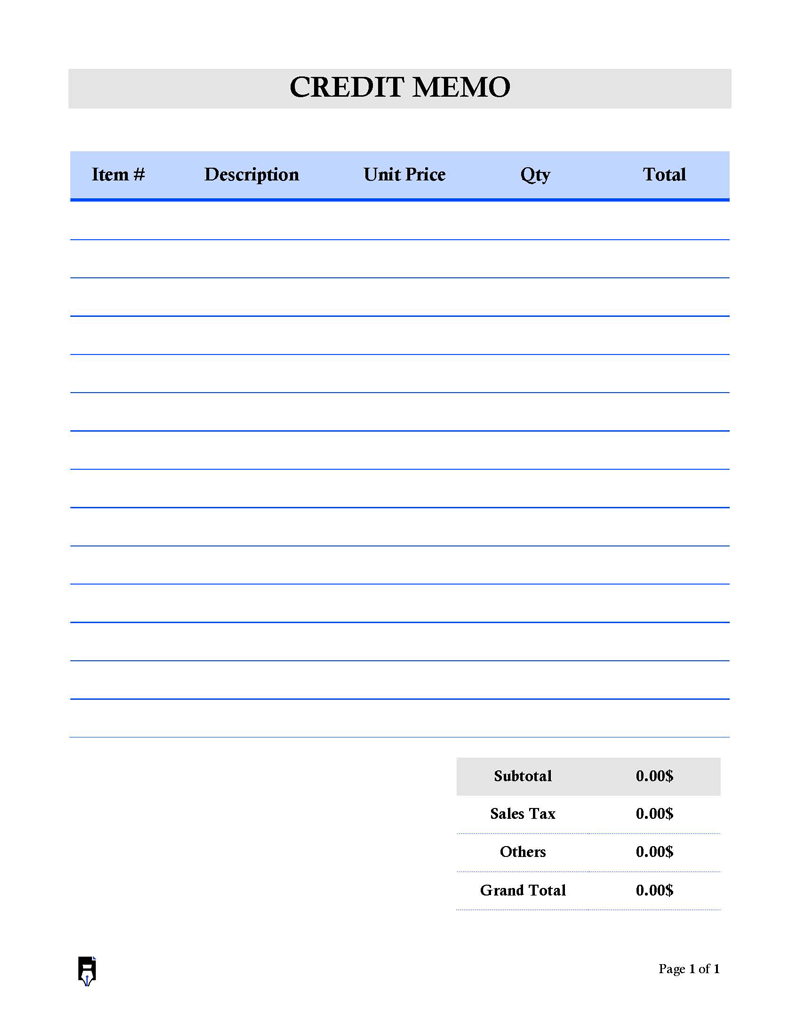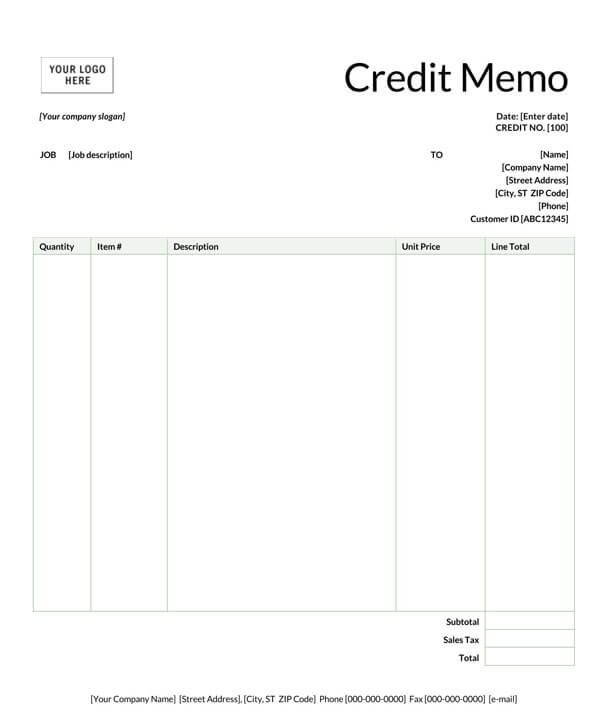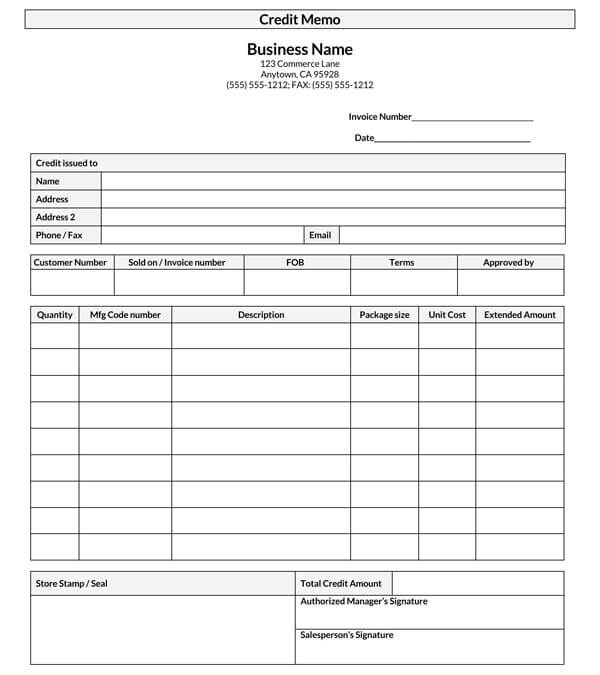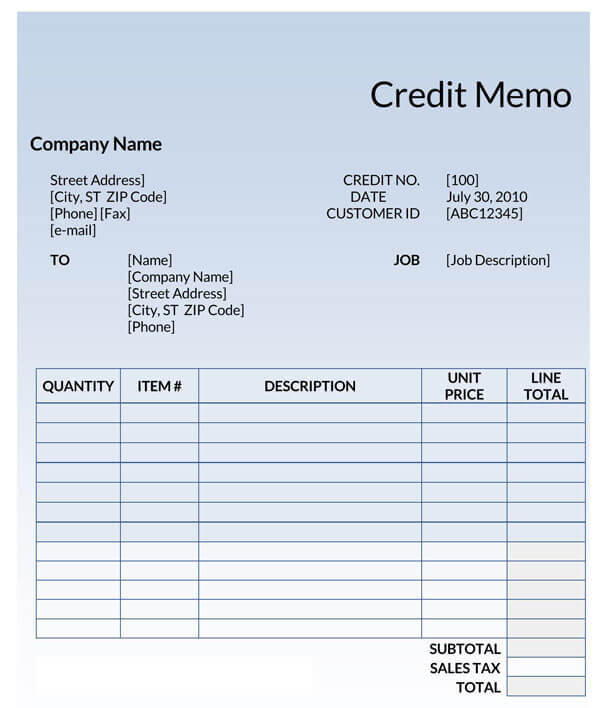A Credit Memo is defined as a document issued by the seller notifying his or her customer(s) that a deduction (credit) will be made to an initially invoiced amount (existing debt) for goods or services purchased, and therefore the buyer will pay a lesser amount than previously expected.
The credit memo will typically indicate the seller and the buyer’s information, a list of items credited, the amount to be credited to the buyer, and the reason for the deductions. A credit memo is alternatively referred to as:
- A credit memorandum
- Credit note
Credit Memo Templates
Here are few downloadable credit memo templates for you to download.
Why is a Credit Memo Issued?
Credit memos are issued to serve different purposes within a business. The primary reason why a seller would be prompted to use a credit memo is when they want to offset the price they quoted for specified goods and services to a customer, such as to correct an invoice error. In addition, a seller would be necessitated to reduce an already quoted price, which will be further discussed later in the article. A credit memo is kept as a record of the consequential reduction of his or her accounts receivable balance. This is of grave importance at the end of each reporting period (monthly, quarterly, or annually) to identify any open receivable accounts by maintaining a proper audit trail. Credit memos can reduce the invoiced amount before or even after payment. Since most jurisdictions do not allow sellers to edit invoices after they have been issued, a credit memo becomes of great importance in situations where there is a need to accommodate price changes without doing away with the initial invoice.
Examples of a credit memo in different scenarios:
Example 1: Company A has been in business with company B for a long. They have an arrangement where Company A supplies a specified amount of good X every month. The production cost of good X has been reduced due to reduction in the cost of raw materials. As a result, Company A has lowered its pricing of good X. Company A should issue a credit memorandum to ask Company B to reduce their quotation by the mentioned amount. Company A should then reduce the same amount from their accounts receivables.
Example 2: Bank Y has been holding a depositor’s money for a specified interest for one year under an agreement that the bank will deposit the interest earned to the depositor’s account after the twelve months. Bank Y can issue a credit note stating that the depositor’s account has been credited the specified amount as interest earned from their money.
Tip: A credit memo can also be utilized to identify recurring issues associated with a specified product, such as defects, insufficient packaging, etc. Also, it can be used to address customer complaints that can otherwise be sorted out by awarding credit or discounts in an easy and fast way without having them return products.
Credit Memo vs. Refund
People will often confuse a credit memo with a refund. Even though these documents have some similarities, they are not short of discrepancies. A credit memo and a refund are similar because a seller can issue both to an already issued invoice, and the quoted price can either be partially or entirely reduced.
On the other hand, unlike a credit memo, a refund memo means that the seller is obligated to give back all or part of the money already paid by the buyer – basically, to reimburse the buyer. In contrast, a credit memo implies that the seller awarded the buyer a credit, which is meant to reduce the buyer’s existing outstanding balance or to reduce the buyer’s invoice quotation in the future.
Essential Information to include in a credit memo
Fundamentally, a credit memo will be structured like a sales invoice. The details and particulars of a credit note address pertinent information of the seller’s intention. Consequently, there is a universal format that is globally accepted by all industries and sectors. These components are:
Reference number (Memo number and date)
The credit note should have a reference number identifying the memo. Additionally, the number of the original invoice and the purchase order number should be provided.
Seller’s contact information
The memo should indicate the seller’s identification information, such as the business name, the seller’s contact information, for instance, mailing address, telephone number, website, email, and the seller’s tax identification number.
Buyer’s contact information
The buyer should also be identified by having their name and contact information. Any number or code that the seller uses to identify the customer should be indicated.
Date
A credit note must contain a date. Include the date of purchase as well as the date of the original invoice. Also, the seller should supply the date to the memo by declaring the effective date, month, and year.
List of items for which the credit was issued
The memo should have an itemized list of all the products credited and the purchase price and quantity of items.
Credit details and credit reasoning
The memo must show the amount of credit awarded for each item and a description stating why the credit is being awarded.
Credit amount
Terms of payment – The total amount owed after the credit has been applied should also be noted down together with the expected payment terms of the new subtotal and the original invoice.
Tax information
The tax amount applicable for the listed items should also appear in the memo. The sales tax amount can be determined by multiplying the subtotal amount with the state’s sales tax percentage.
Seller’s signature
Lastly, the credit note should include the seller’s signature to validate the document’s authenticity.
Reasons to Use a Credit Memo
A seller can issue a credit memorandum for several different reasons. The most popular reasons among sellers are:
Correcting an invoice error
Credit memos can be used to correct errors made in the original invoice.
Incomplete order
In business, unintentional mistakes such as delivering part of the product are likely to happen, especially when shipping large orders. The cost of these incomplete orders can be offset using a credit note if the buyer wishes to keep the received incomplete purchase order and only pay its cost instead of the expected initial full cost.
Returned goods or rejected service
In cases where buyers will occasionally return goods or reject services for one reason or other, such as defects, failure to meet buyer’s expectations, or delivery of the wrong product, the seller can use memos to write off the money paid, or that was to be paid by the buyer.
Warranty
During the warranty period, goods can become faulty or damaged. Sellers can use a credit memo to award the buyer some credit, which might be part or the entire cost of the good.
Price change
When there is a pricing dispute, and the seller decides to resolve the issue by awarding a credit, they can use a credit memo to communicate the reduction. The price change can also be beneficial in a case where there is a marketing allowance, and the seller wants his or her customers to enjoy it.
A change in order
Sellers can use credit notes to adjust the invoice quotation amount accordingly to accommodate the price variations for different goods when buyers change their orders instead of asking for refunds. A credit memo can be issued incorporating the difference in prices between the two orders.
Overpayment
Overpayment is not uncommon in business; sellers can use a credit note to reimburse buyers who overpay. The overpayment can be credited to future purchases, or buyers can collect it as a cash payment.
A cancelled purchase
A credit memo can be used by a seller to cancel all the amount quoted in an invoice, for example, if the buyers decide to cancel a purchase, which can sometimes be even before the goods are delivered.
Use Case of a Credit Memo
A credit memorandum is a financial document that should appear at both ends of a transaction, sale, and purchase. An example to illustrate this is as follows: to strike a balance between sale and purchase, if the seller has invoiced a buyer for a purchase order of a TV set worth $1000 which is yet to be paid, the seller has receivables worth $1000 while the buyer has payables worth $1000. After receiving the TV, the buyer identifies it does not meet his or her specifications. Consequently, they propose to return the TV and purchase another TV set that meets their specifications, valued at $900. Instead of doing away with the original invoice, the seller credits the buyer’s accounts receivable $100 once the TV is returned in its original shape. This credit is awarded through a credit memo informing the buyer that instead of paying the initial $1000, they will pay $1000 less $100, that is $900. Upon receiving the credit memo, the buyer deducts $100 from their accounts payable and, in turn, should issue a debit memo to the seller.
Conclusion
A credit memo is issued by the seller to the buyer, informing the buyer that the seller will credit or decrease the amount the buyer owes them. A standard credit note includes the purchase order number (PO), seller’s details, buyer’s details, list of items, price, and quantity of each item, terms of payment, date of purchase, sales tax, and total discounted amount. Credit memos are essential documents for recording revenues as they make it easier for sellers to track the specified products. A credit note is not a refund memo; a refund memo typically requires the seller to refund the money to the buyer for any returned product.
